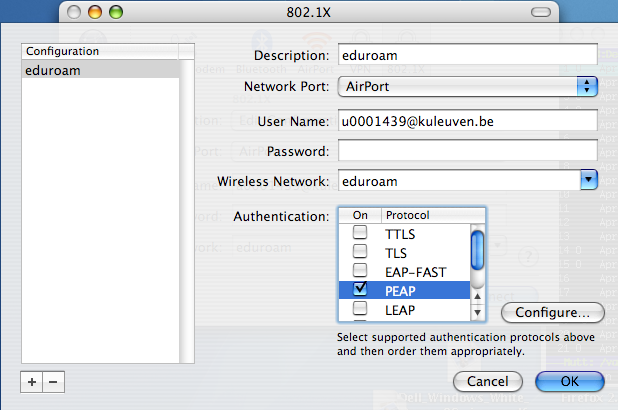

- #NAME OF PROGRAM THAT MAAGES WIRELESS NETWORK FOR MAC OS X INSTALL#
- #NAME OF PROGRAM THAT MAAGES WIRELESS NETWORK FOR MAC OS X DRIVER#
Once Wifi Radar is installed you can find it in Applications > Internet. Just open up your Add/Remove Software tool and install. Since Wifi Radar is found in most all default distribution repositories, the installation is as simple as installing any Linux application.
#NAME OF PROGRAM THAT MAAGES WIRELESS NETWORK FOR MAC OS X INSTALL#
I will also assume you have both SSID and the authentication key for your wireless connection, otherwise you probably wouldn’t be attempting to make this connection in the first place, right?įor many, Wifi Radar is a Python/PyGTK2 application that offers quite a bit more features and flexibility than the average tool (it will even speak the status of your connection – when connecting or disconnecting – so you know, without looking, if you are connected.) Wifi Radar is easy to install as well as use. Most often this will have your wireless working much quicker than trying to go the ndiswrapper route.
#NAME OF PROGRAM THAT MAAGES WIRELESS NETWORK FOR MAC OS X DRIVER#
If you have found yourself with a wireless card that does not seem to work you might consider installing the latest Ubuntu and enabling the proprietary driver for your device. I will assume that you do have wireless hardware that does work in Linux. I would like to offer options for both GUI and command line with the help of Wifi Radar and ifconfig. What are your options? You could go for a GUI or command the command line. In those instances you need to take a look at a different toolset for connecting you to a wireless access point. But what happens when you opt for a different desktop such as E17 or Fluxbox? Or what if the “default” standards aren’t flexible enough or feature-rich enough for your needs.
:max_bytes(150000):strip_icc()/002-set-up-multiple-network-locations-on-mac-2260396-bd922419f7ef45c78342bf68193d436e.jpg)
That of course presumes you are using the standard desktops (GNOME or KDE). By default, the standard Wi-Fi tools for the Linux desktops are straight-forward and reliable. If you are a mobile Linux user one of the first things you need to do is to connect that mobile device to a wireless access point.


 0 kommentar(er)
0 kommentar(er)
